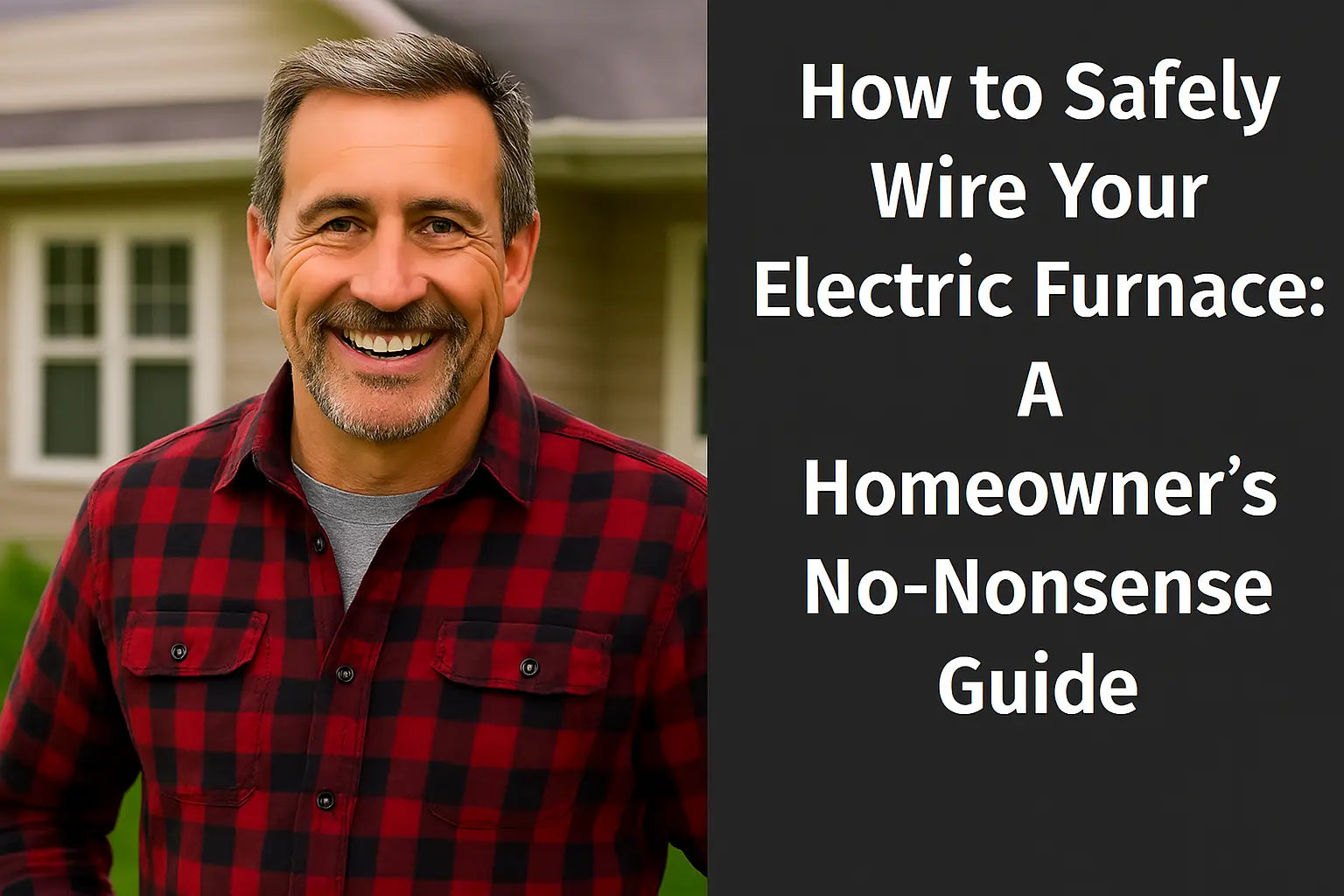Mike’s Hello 🔧
Hey there, Mike Sanders comin’ at ya. You know I’ve installed more electric furnaces than I’ve had cups of coffee (and trust me, that’s sayin’ something). One of the questions I get all the time is: “Can I wire this thing myself?” And the answer is... maybe! If you know your way around a breaker panel, follow instructions, and don’t treat electricity like it’s a toy—you’re golden. But let’s walk through it slow and smart, just like I’d do it in your garage. Safety first, pride second, heat third. Let’s roll. ⚙️🔥
First Things First: Safety Check ☑️
Before you touch a single wire, you need to cut power to the whole shebang. That means flipping the main breaker—yes, the BIG one. Electricity doesn’t mess around, and neither should you.
Get yourself:
-
Insulated gloves
-
Voltage tester (double-check those wires are truly dead)
-
Safety glasses (because sparks happen)
As Family Handyman wisely reminds us, if you're not 100% confident with electrical work, call a licensed electrician. They explain the basics of electrical panels in this helpful guide:
👉 Understanding Electrical Panels – Ideal HVAC Services
Wiring the Furnace Itself 🔌
Alright. Electric furnaces don’t use gas, but they pull a serious amount of juice—usually 240 volts. That means you’ll need a dedicated double-pole breaker matched to the unit’s amperage.
Step-by-Step:
-
Check the nameplate on your furnace—it’ll tell you the voltage and amperage required.
-
Run a properly sized wire from the breaker to the disconnect switch near the furnace. For most 10–15kW units, that means 6 or 8-gauge copper wire.
-
From the disconnect, run conduit to your furnace's main lugs or terminal block.
-
Ground it properly. Your grounding wire matters just as much as your hot leads.
Want a visual reference? Electrical Technology breaks down residential breaker sizing and wire gauge in this awesome chart:
👉 Circuit Breaker Size Calculator – AllumiaX
Thermostat Wiring 🎛️
Modern electric furnaces connect to a thermostat just like a heat pump or central AC. That means you’ll typically deal with 24V control wiring—usually R, W, G, and C wires.
-
R = Power from the transformer
-
W = Heat
-
G = Fan
-
C = Common
Most setups are pretty simple, but if you’ve got a smart thermostat like Nest or Ecobee, make sure it's compatible. They often need a “C” wire to stay powered.
For a great compatibility resource, check out Smart Thermostats 101 from ENERGY STAR:
👉 Thermostat Compatibility Checker – Dominion Energy
Matching Breaker to Furnace Size ⚠️
Here's where most folks get nervous—and rightly so. Undersizing a breaker is like trying to run a V8 engine through a drinking straw. Oversizing? That’s how you start fires.
If your furnace is rated at 15kW, it pulls around 62.5 amps. Most pros would run this with:
-
8-gauge wire
-
70-amp breaker
If you’re unsure, this chart from Home Depot’s Electrical Wire Guide is a life-saver:
👉 Electrical Wire & Breaker Size Guide – Total Home Supply
Common Wiring Mistakes (and How to Dodge 'Em) 🚫
❌ Running wire without conduit
Bare wires aren’t just illegal—they’re dangerous. Always run your wires in metal or PVC conduit if local code requires it.
❌ Forgetting to ground
No ground = no good. Ground both at the breaker and at the furnace terminal.
❌ Reversing hot and neutral
Yes, it happens. Label your wires clearly, and triple-check before flipping the breaker.
❌ Skipping the disconnect box
It’s not optional. You need a shutoff within sight of the furnace for service safety.
What the Code Says (Yep, It Matters) 📜
Local code is king, but most regions follow the National Electric Code (NEC). It states electric furnaces must:
-
Be on a dedicated circuit
-
Include a clearly marked disconnect
-
Use UL-listed breakers, wire, and terminals
-
Be installed per manufacturer instructions (don’t wing it!)
NEC also dictates working clearances and access, so don’t shove your furnace into a crawlspace or closet without reading the manual.
For full NEC guidance, you can check NFPA’s Code Library (search “Article 424” for electric heating):
👉 NFPA 70: National Electrical Code
Final Testing & Power Up 🔄
Once everything’s connected:
-
Re-check all terminals for tightness
-
Verify wire colors match your thermostat instructions
-
Confirm grounding and bonding
-
THEN, flip the disconnect and main breaker
Listen for hums, buzzes, or smells (none = good). Turn up the thermostat and check airflow. If the blower kicks on and the heat strips fire up—you nailed it!
Mike’s Wrap-Up 👷💬
So there you go—wiring an electric furnace ain’t rocket science, but it sure demands respect. You gotta be methodical, patient, and smart. Get sloppy with it, and you’ll end up calling a pro anyway... or worse. Take your time, double-check the codes, and when in doubt, get a licensed electrician to bless your work (or do it for ya).
And hey—if you’re still shopping for the right system or need a new electric furnace that fits your space and budget, The Furnace Outlet has some solid deals you should check out:
👉 Browse Electric Furnaces – The Furnace Outlet
Need to know how to maintain your electric furnace? Visit my guide: Winter Checklist.
Stay safe, stay warm, and I’ll see you on the next one. 🔥💪
- Mike, your cool HVAC neighbor








1 comment
Walt
I’m installing new 15kw same as old one. Old had 2wire and a ground. Had a spliter to make 4 wire before going to breakers. New furnace does not have the spoiler before breaker. Can I but in a spliter. Or do I need to run new wire. New and old have same size breakers. Thank you